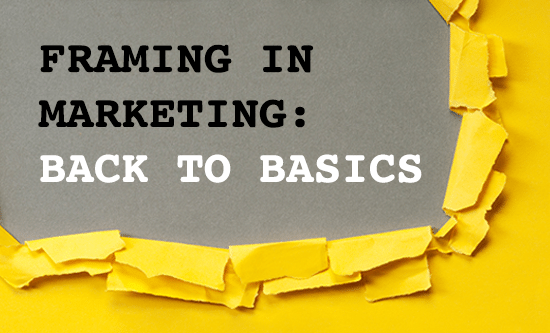First defined by Israeli psychologists Daniel Kahneman and Amos Tversky in the 1970s, the ‘framing effect’ essentially refers to the way that businesses and individuals choose to present information.
Since it was discovered, the Framing Effect has consistently been proven to have a significant influence over the way humans make decisions. It’s therefore no surprise that marketing agencies around the world have integrated this into their advertising campaigns, intentionally trying to influence customers’ decision-making processes to boost engagement and drive sales.
Numerous studies have revealed that even a slight alteration to the way something is presented can result in a completely different response or decision. For example, all of us have wandered into a convenience store at some stage in our lives, looking for a sugary snack to cure our 3.30pm energy slump. In an effort to avoid the guilt of consuming 1,000 calories before dinner, most of us probably decided upon the ‘healthy’ alternative i.e. a chocolate that claimed to have ‘50% less fat’ than other options. By choosing this ‘positive’ message, we as consumers were able to rationalise our purchase and validate our decision-making.
Depending upon the product being advertised, marketers will choose to employ a variety of different ‘frames’ i.e. positive, negative, emotional and statistical. By matching the correct context with the correct frame, there is a higher likelihood that the message will be positively interpreted.
Here are the four main types of frames you should consider while composing your marketing message:
- Gain: this type of framing highlights all the potential benefits that can be gained from using a particular product. For example, fancy perfume is often advertised as offering consumers allure, class and status.
- Loss: it is human nature to avoid or mitigate loss as much as possible. Scarcity is a particular type of loss framing and it’s all about instilling a fear of missing out e.g. Boxing Day sales are for one day only.
- Emotion: to instil an emotional attachment to a brand, some advertisers will stress the importance of how it makes you feel. For example, Red Bull’s high-energy advertising makes us feel adventurous and gives us the courage to try new things.
- Statistical: the framing of statistics is fascinating as it can actually support and oppose your argument at the same time, depending upon which way you look at it. For example, 8 out of 10 dentists endorsing a brand of toothpaste sounds pretty impressive. On the flipside, if 2 out of 10 dentists oppose that same toothpaste, there would undoubtedly be serious questions as to its quality.
Regardless of what you’re selling, whether it’s a can of baked beans or a brand new digital service, framing is essential.
In addition to making your product easy to understand, framing also helps to engage your customer and leaves a memorable message for them to take home.
Of course, framing shouldn’t be the only tactic in your marketing toolbox. Instead, utilise framing as part of a wider framework to motivate customers and also leverage other behavioural techniques such as the confirmation bias, sunk cost fallacy and social proof. Nowadays AI-decisioning technology even enables you to automatically determine which technique is relevant for each individual customer at scale.
By Kitty Shui, Data-driven Strategy Specialist at Digital Alchemy.




